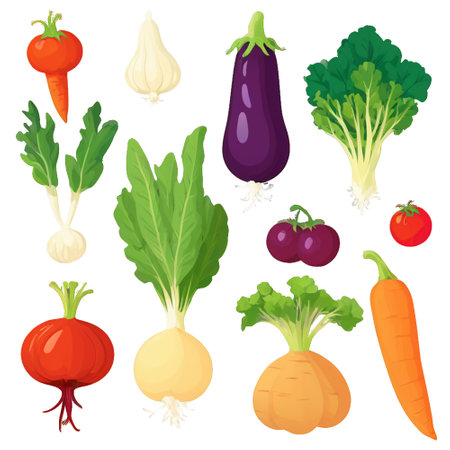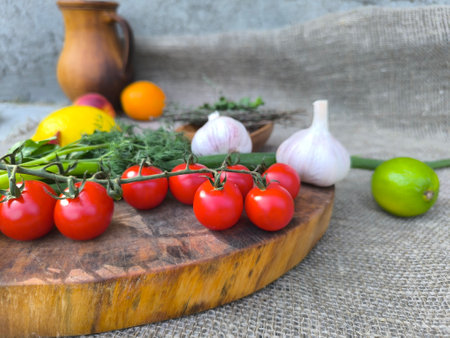Understanding Aphids and their Impact on UK Crops
Aphids are among the most persistent and troublesome pests faced by gardeners and growers across the United Kingdom. These tiny, soft-bodied insects can be found on a wide variety of vegetables and herbs, particularly in the temperate climate that defines much of Britain. Several species are especially prevalent in UK gardens and allotments, including the greenfly (Myzus persicae), black bean aphid (Aphis fabae), and cabbage aphid (Brevicoryne brassicae). Each species has its own preferred host plants, but all share similar lifecycles and feeding habits that make them a significant threat to healthy crops.
Aphids reproduce rapidly, often giving birth to live young without mating during the warmer months. This allows populations to explode under favourable conditions, with several generations occurring in a single season. Overwintering eggs or winged adults ensure their survival from one year to the next, often emerging in early spring as temperatures rise. Gardeners may first notice signs of infestation through curling or yellowing leaves, sticky honeydew deposits attracting ants, or the presence of sooty mould. In severe cases, plant growth is stunted and yields are dramatically reduced.
Recognising the common aphid species and understanding their lifecycle is crucial for timely intervention. In the context of UK-grown vegetables and herbs, vigilance is needed from early spring through autumn, as infestations can establish quickly and spread between neighbouring plots. The typical symptoms observed in British gardens serve as an important early warning system, helping growers to adopt comprehensive approaches before serious damage occurs.
Encouraging Natural Predators and Supporting Biodiversity
One of the most effective and sustainable ways to control aphid populations in UK-grown vegetables and herbs is to encourage the presence of their natural predators. Beneficial insects such as ladybirds (often known as ladybugs), lacewings, and hoverflies play a pivotal role in keeping aphid numbers in check. In our temperate UK climate, fostering habitats for these native species not only helps with pest management but also supports wider garden biodiversity.
Practical Methods to Attract Aphid Predators
Creating an environment that attracts and sustains these helpful insects requires deliberate planning and ongoing care. Below is a practical overview of eco-friendly approaches tailored for UK gardens and allotments:
| Predator | Key Habitat Features | Attractive Plant Species | Additional Tips |
|---|---|---|---|
| Ladybirds | Dense foliage, shelter from wind | Nettles, dandelions, yarrow | Avoid pesticides; provide log piles or bug hotels nearby |
| Lacewings | Wildflower borders, tall grass patches | Dill, fennel, coriander | Leave some areas undisturbed during winter for overwintering adults |
| Hoverflies | Nectar-rich flowers, sunny spots | Marigold, alyssum, cow parsley | Sow sequentially for continuous blooms; keep water sources available |
Enhancing Garden Structure for Biodiversity
Incorporating a variety of plant heights and structures—such as hedgerows, mixed borders, and wild corners—provides shelter and breeding sites for beneficial insects. Introducing small ponds or leaving damp areas can further increase habitat diversity, attracting additional aphid-eating species like frogs and birds. Remember that maintaining a balance between cultivated crops and wild spaces is essential; too tidy an environment may actually deter these valuable allies.
Cultural Practices to Support Predator Populations
Avoid blanket application of insecticides, as these often harm both pests and their natural enemies. Instead, use targeted interventions only when necessary and opt for organic-approved products where possible. Regularly inspect your plants for early signs of aphids to allow natural predators time to respond before infestations become severe. By supporting the life cycles of native predators through thoughtful planting and gentle maintenance, you lay the groundwork for resilient vegetable and herb production across the British growing season.

3. Cultural and Physical Control Methods
Aphid management in UK vegetable plots and herb gardens is most effective when cultural and physical controls are implemented as the first line of defence. These methods are especially valuable for gardeners seeking to reduce chemical use while maintaining healthy crops. The following step-by-step guidance outlines practical strategies tailored for British growing conditions.
Step 1: Crop Rotation
Crop rotation disrupts the life cycle of aphids and helps prevent population build-up. Plan your plot so that susceptible crops, like brassicas or legumes, are moved to different beds each year. This reduces the risk of recurring infestations, as overwintering aphids and their eggs will not find their preferred host plants in the same location season after season.
How to Rotate Effectively:
- Divide your growing space into sections based on plant families (e.g., brassicas, alliums, legumes, root vegetables).
- Each year, shift crops to a new section following a three- or four-year plan.
- Keep records of what was planted where to avoid accidental repetition.
Step 2: Interplanting
Interplanting involves mixing aphid-attracting crops with those that repel them or support natural predators. For example, sowing marigolds or nasturtiums among vegetables can deter aphids or divert them away from prized crops. Herbs such as chives, coriander, and mint also emit scents that confuse or repel aphids.
Practical Interplanting Tips:
- Plant companion species alongside vulnerable vegetables (e.g., intersperse carrots with onions or leeks).
- Add flowering plants to attract beneficial insects like ladybirds and hoverflies, which feed on aphids.
- Avoid large monocultures which make it easier for aphids to spread rapidly.
Step 3: Using Horticultural Fleece
Horticultural fleece provides a physical barrier that prevents aphids from reaching young plants. It is particularly useful in early spring when seedlings are most vulnerable.
Applying Fleece Correctly:
- Drape fleece loosely over rows immediately after sowing or planting out.
- Secure the edges with soil or pegs to prevent gaps where pests could enter.
- Lift the fleece periodically to allow for weeding and watering, then replace promptly.
Step 4: Regular Inspection Routines
Frequent inspection is critical for early detection and intervention. Examine both upper and lower leaf surfaces weekly during the growing season.
Inspection Checklist:
- Look for clusters of small green, black, or grey aphids on tender shoots and undersides of leaves.
- Squeeze or brush off small infestations by hand where practical.
- Remove heavily infested leaves or stems to prevent spread.
Summary
By integrating these cultural and physical techniques—crop rotation, interplanting, use of horticultural fleece, and diligent inspection—UK growers can significantly reduce the likelihood of severe aphid outbreaks without reliance on synthetic pesticides. These methods align well with local allotment traditions and sustainable gardening values.
4. Responsible Use of Biological and Chemical Controls
The safe and effective management of aphids on UK-grown vegetables and herbs relies heavily on a responsible approach to both biological and chemical control methods. Understanding local regulations, adhering to organic standards, and selecting appropriate products are fundamental to both crop safety and environmental stewardship.
Insecticidal Soaps and Horticultural Oils: Safe Application
Insecticidal soaps and horticultural oils are popular choices for aphid control among UK growers due to their relatively low toxicity and minimal environmental impact when used correctly. These products disrupt the insect’s cell membranes or suffocate aphids, but they must be applied with precision:
- Apply during cooler parts of the day (early morning or late afternoon) to reduce plant stress.
- Test on a small area first, especially for tender herbs like basil or coriander, as some plants may show sensitivity.
- Ensure complete coverage of affected foliage, including undersides of leaves where aphids congregate.
- Avoid application in direct sunlight or during high temperatures to prevent phytotoxicity.
Biocontrol Agents: Approved Choices in the UK
The use of natural predators such as ladybirds (Adalia bipunctata), lacewing larvae (Chrysoperla carnea), and parasitic wasps (Aphidius spp.) is encouraged, particularly in protected environments like polytunnels or greenhouses. For open-field crops, habitat enhancement—like planting wildflower borders—can support beneficial insect populations. Below is a quick reference table outlining common biocontrol agents approved for use in the UK:
| Biocontrol Agent | Target Aphid Species | Best Application Setting |
|---|---|---|
| Adalia bipunctata (ladybird) | General aphid species | Greenhouse/Outdoor |
| Chrysoperla carnea (lacewing larva) | Wide range of aphids | Greenhouse/Polytunnel |
| Aphidius colemani (parasitic wasp) | Green peach & melon aphid | Greenhouse/Polytunnel |
Compliance with UK Organic Standards and Local Regulations
When considering either biological or chemical options, it is vital to check that all products are approved by the Health and Safety Executive (HSE) and conform to the Soil Association’s organic standards if you are operating organically. Not all soaps, oils, or biocontrols available online are permitted for commercial use in the UK; always verify registration status before purchase. Record-keeping of applications is not only best practice but often a legal requirement under Red Tractor Assurance schemes or similar certification bodies.
Summary Table: Key Considerations for Responsible Aphid Control in the UK
| Method | Main Advantages | Cautions/Regulations |
|---|---|---|
| Insecticidal Soaps/Oils | Low toxicity, broad-spectrum action | Avoid hot weather; check plant sensitivity; only use HSE-approved products |
| Biocontrol Agents | Sustainable, specific targeting | Select species adapted to UK climate; comply with release guidelines; enhance habitat for effectiveness |
| Chemical Pesticides* | Rapid knockdown (last resort) | *Only use if listed for specific crop/aphid; strict adherence to withdrawal periods; minimise non-target exposure |
The responsible deployment of these controls ensures effective aphid management while safeguarding pollinators, beneficial insects, and compliance with both legal and ethical standards established for UK horticulture.
5. Community and Allotment Collaboration
In the UK, the tradition of allotment gardening and strong local communities presents a unique opportunity to collectively address aphid infestations. By fostering collaboration among gardeners, both within neighbourhoods and across allotment sites, we can enhance our capacity to monitor, prevent, and manage aphid outbreaks on vegetables and herbs.
Knowledge-Sharing Initiatives
One of the most effective strategies is establishing channels for knowledge-sharing. Regular meetings, workshops, or even informal chats at the allotment gates can facilitate the exchange of proven methods—such as introducing natural predators or recognising early signs of infestation. Many UK gardening societies already produce newsletters or online forums where members share seasonal tips and updates about pest pressures in their area. This communal wisdom is invaluable for keeping everyone informed and prepared.
Coordinated Monitoring Efforts
Monitoring aphid populations across multiple plots increases the likelihood of early detection and swift response. Gardeners can coordinate weekly walkabouts or set up shared noticeboards to report sightings. Such collective vigilance helps identify patterns of spread and triggers timely action before infestations become severe. Additionally, using common recording templates—either digital or paper-based—ensures consistency in reporting, making it easier to spot trends at a community level.
Communal Planting Approaches
Strategic planting schemes designed collaboratively can also reduce aphid impact. For example, companion planting—whereby certain herbs (like chives or basil) are interspersed among susceptible crops—can naturally deter aphids and attract beneficial insects. Organising block plantings or buffer zones around the allotment site can help contain infestations within specific areas. Some groups even coordinate sowing schedules so that crops most vulnerable to aphids are staggered, limiting opportunities for large-scale outbreaks.
The Role of Local Garden Groups
Local gardening clubs and allotment associations play a key role in facilitating these collaborative efforts. By acting as hubs for information, resources, and support, they empower individual gardeners while strengthening collective resilience against pests like aphids. Liaison with local councils or agricultural extension officers can further provide access to expert advice and potential funding for group initiatives.
A Culture of Collective Responsibility
Ultimately, building a culture of collective responsibility not only improves pest management outcomes but also enhances community spirit. By working together—sharing successes, failures, and lessons learned—UK gardeners can protect their cherished vegetables and herbs while enriching their social bonds. This collaborative ethos ensures that aphid problems are tackled proactively rather than reactively, benefiting both current and future generations of growers.
6. Monitoring and Early Detection Strategies
Effective management of aphid infestations in UK-grown vegetables and herbs hinges on timely detection and intervention. Establishing robust monitoring protocols is vital to limit crop damage, especially given the variable British climate and the rapid life cycle of aphids.
Best Practices for Regular Inspection
Consistent and methodical inspection is the foundation of early aphid detection. Gardeners and growers should make it a habit to examine the undersides of leaves, stems, and growing tips at least once or twice a week during peak seasons. Pay close attention to young plants and new growth, which are particularly susceptible to aphid colonisation. Using a hand lens can help spot the earliest signs of infestation, such as sticky honeydew residue or distorted foliage.
Utilising Sticky Traps for Ongoing Surveillance
Sticky traps provide an effective, low-maintenance method to monitor flying aphid populations across allotments, gardens, or commercial sites. Place yellow sticky cards slightly above crop height throughout the growing area, checking them regularly for trapped aphids and other insects. By tracking changes in trap catches over time, growers can anticipate surges in aphid activity and respond before widespread outbreaks occur. Remember to replace traps every few weeks or when they become heavily covered.
Documenting Aphid Activity for Prompt Intervention
Maintaining detailed records of aphid sightings, trap counts, weather conditions, and control measures applied is essential for informed decision-making. Recording this data—either in a physical logbook or digital spreadsheet—enables growers to identify patterns related to specific crops or environmental triggers. This documentation supports timely interventions such as introducing natural predators, applying approved treatments, or adjusting cultural practices to reduce future risk.
Integrating Monitoring into Routine Crop Care
Incorporating these monitoring techniques into regular crop care routines not only enables prompt action but also fosters a culture of vigilance among all members of a gardening team. By spotting issues early and intervening quickly, UK growers can significantly minimise the impact of aphids on vegetable and herb yields throughout the season.


